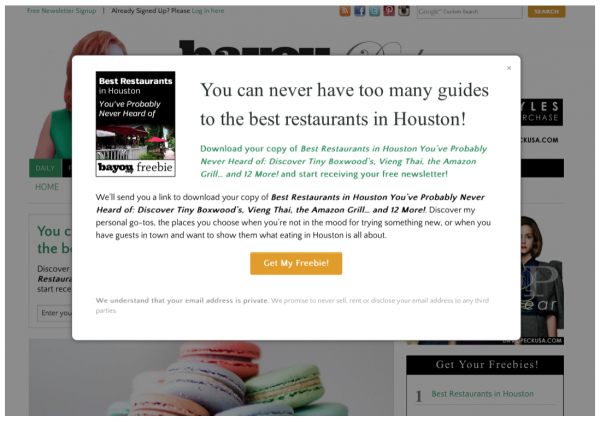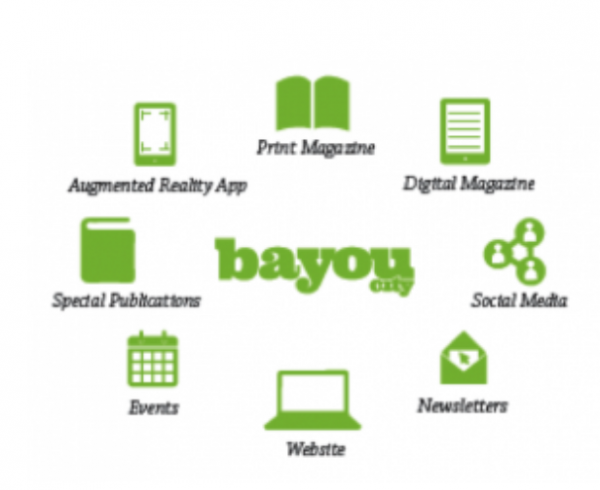Spreading the love and the content: Multiplatform publishing is the new normal for magazine companies

Some folks like to talk about the decline of magazines. And yet, the Google search question “how to start a magazine company” is asked 1,680 times a year (and 1.1 billion pages are served up in response), so it seems that not only are magazines not dying, there are still new ones being born.
Of course it’s not easy to achieve. Then again, that’s what Mequoda is here for, to help would-be publishers who want to know exactly how to start a magazine company, just as much as it is to help legacy publishers transition into the digital age.
And one of our clients is proving itself the quintessential 21st-century magazine publishing company, making it an excellent case study for anyone interested in entering the business themselves, here at the opening of 2014.
[text_ad]
How to start a magazine company, Step 1: Think big. No, bigger.
When we first met Becky Davis Standridge and Mark Standridge in September 2012, they were running a franchised, hyper-local, ad-supported online magazine in a specific Houston neighborhood, Our Blök Greater Heights. They had been noticing some pretty exciting new technologies in digital magazines, which they weren’t able to leverage in their current business, so they wanted to break free of the limitations of their franchise operation and launch their own company.
What they planned, they told us, was to get less hyper-local and to think bigger. This meant expanding their reach to a larger segment of Houston – though still not all of it. Houston being a major metropolis already served by several city magazines, they wanted to focus on what they refer to as the “close-in” areas of the city that they call Bayou City.
At the same time, they decided to be more than just a simple magazine. They wanted it all: website/portal, print magazine, digital magazine and email newsletters. Perhaps because they weren’t longtime print magazine publishers, they didn’t feel constrained by something they’d always known, nor were they hesitant to try something new.
They understood the message that we find ourselves delivering repeatedly: Generate revenues and spread content-producing costs across multiple platforms in order to achieve success in the digital age. As they explain it to their advertisers, they’re not just a magazine: “Bayou City is Houston’s premier experience-based lifestyle magazine & digital marketing platform.”
[text_ad]
How to start a magazine company, Step 2: Build a portal
With the help of the Mequoda team, the Bayou City magazine folks built a prototypical Mequoda website portal. It features vertical themed architecture, optimized and aligned free daily content, free downloads, and floaters to convert visitors to newsletter subscribers. If you’ve read this blog regularly, this should be familiar.

As we preach over and over, the purpose of a portal is to drive traffic with short-form, optimized daily content. Arriving visitors are served a floater offering a related free report in exchange for an email address, and those email subscribers become your best and most important customers, spending two to three years on your email list and spending money on the products that you promote to them via email and on-site advertising.
No Mequoda system is built without a portal. If you want to understand how to create a magazine company, you must realize that it’s the key that opens the door to profits across your different platforms.
How to start a magazine company, Step 3: Multiplatform publishing
Remember, Davis and Standridge are creating a “digital marketing platform,” not just a magazine. A graphic that illustrates this on their website is similar to a Mequoda brand wheel, and includes the print magazine, digital magazine (both launched this November, one year after they made the decision to move forward with their own company) and free digital newsletters.

What this means is that all platforms are considered part of one content-generation process. When writers submit a story idea, they’re required to create a multimedia package, including a story for the magazine, a related piece for the website, social media tie-ins, and any events that can be tied to the concept.
Thus, when a theme of giving nontraditional gift was selected, the magazine featured an article about a couple who dedicates their home as a venue for nonprofit fundraisers.
On the portal, a separate post focused on several of the couple’s most beloved charities.
Finally, Bayou City invited Houstonians to experience this for themselves at a special fundraising event in January at the restored 1910 home.
We like to think that the portal for a 21st-century multiplatform publisher is like a giant vacuum, sucking in three different audiences: the print magazine, digital magazine and digital newsletter audiences. In fact, the digital newsletter is the Holy Grail of digital publishing that many publishers overlook – yet a digital newsletter, by allowing you to sell multitudes of your premium products, can generate up to 1/3 of your revenue.
In fact, Davis and Standridge will tell you that the advertising strategy they use is a sponsorship model – which Mequoda advocates because it delivers solid revenues for a whole lot less work – that’s based on email circulation, not website traffic. The Bayou City business model is centered on long-term relationships with its newsletter subscribers, not random eyeballs.



The guys at TRVL were pretty (http://www.trvl.com) amazing. They started a brand new travel-oriented digital magazine a couple of years ago with fantastic success. It quickly became a top download in the App store.
Yes, think multi platform. If you’re not, you’re leaving money on the table in the best case, and hastening failure in the worst case.